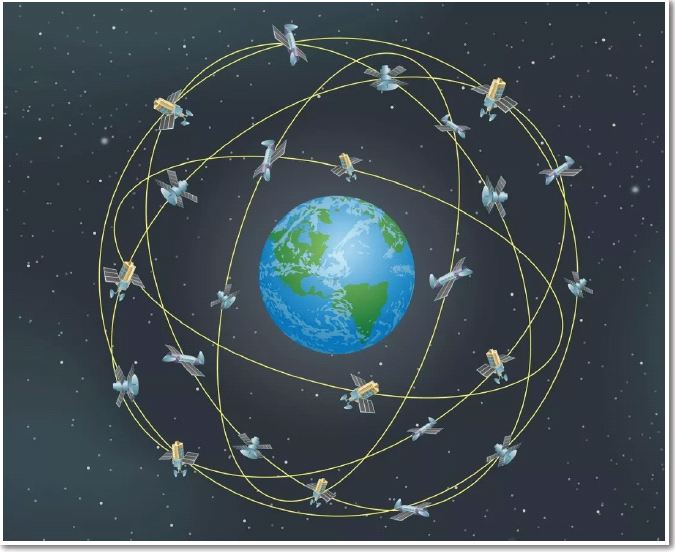bottom
|
Shanghai Academy of Spaceflight Technology Powered by www.300.cn 沪ICP备15011809号 |
New Detail
[Popular Science] A Probe into Satellite Frequency and Orbit Resources
Editor’s note: ![]()
A few days ago, the author participated in relevant activities of the International Telecommunication Union (ITU) as a member of the Chinese delegation on behalf of SAST Frequency Center, and served as the project leader. This is the first time that the author and SAST participated in ITU’s research activities. Through this experience, the author has gained a profound understanding of “satellite frequency and orbit resources” and has written this article.

△The original picture is from the Internet.
At the main forum of the 2019 CASC Conference, key words such as “satellite orbit and frequency”, “integration of space and ground networks” and “space superiority” are constantly flashing on the large screen, indicating the shortage of satellite frequency and orbit resources has become a great challenge in the development of aerospace industrialization.
Satellite frequency and orbit refers to the frequency used by satellite radio stations and the space orbit position where satellites are located. They are the natural resources developed and utilized by human beings with the invention of satellite technology, the premise and foundation for the establishment of all satellite systems, and the necessary condition for the normal operation of satellite systems. In other words, satellite systems without frequency and orbit resources will not be able to soar in the space.
Satellite frequency and orbit resources are important strategic resources. On the one hand, with the rapid development and construction of China’s aerospace systems, the demand for satellite frequency and orbit resources is increasing rapidly, resulting in a prominent contradiction between the demand and the acquisition of frequency. On the other hand, the competition for frequency and orbit resources in the world is extremely fierce, and has expanded from the technical level to diplomatic, economic, political and other aspects, posing severe requirements for strengthening the acquisition of frequency and orbit resources.
Current Status of Frequency and Orbit Resources
The competition for frequency and orbit resources in the world is extremely fierce. Taking HEO systems as an example, 90% of the C and Ku frequency bands at GEO orbits in the world are currently controlled by a small number of operators, and almost all developing countries have to use the satellite orbits on a paid basis. At present, it is almost impossible to expand the GEO orbit of any C and Ku frequency band through the channels of non-commercial cooperation.

△The original picture is from the Internet.
The internet systems for LEO systems have sprung up like mushrooms. According to the submission of network information, the submission of the satellite network information for LEO constellations in the world is mainly concentrated in the countries and regions with well-developed satellite communication such as Europe and the United States. Although the total number of satellite networks of LEO satellites is less than that of HEO satellites, there has been a serious shortage of spectrum and orbit resources because of the strong exclusivity of the frequency and orbits of LEO constellations. In the case of LEO systems, only one in-orbit satellite is required for the satellite operator to enable the entire NGSO network information in accordance with the current ITU rules. ITU is currently studying changes to relevant rules to introduce the “milestone” provision, that is, a certain number of satellites must be deployed within the specified time frame in order to obtain a corresponding status of international rules. This provision poses certain requirements for engineering construction and actual deployment.
How to Acquire Frequency and Orbit Resources
Each country shall, in accordance with the “Rules of Preemption” of ITU, submit to ITU the radio frequencies and orbit parameters of the proposed satellite system (commonly referred to as satellite network information) within two to seven years prior to the launch of the satellite, and then obtain the legal right to use the satellite internationally by carrying out and completing a series of necessary procedures and requirements for frequency coordination, registration, etc. with other satellite systems and terrestrial radio service systems that have been declared in the world. This right is subject to the constraints and protection of international conventions and rules.

△ The original picture is from the Internet.
In accordance with international rules, under the premise of equal division of status and conforming to radio rules, satellite networks declared first have the priority to use radio frequencies and to be protected from harmful interference, while satellite networks declared later shall not cause harmful interference to those declared first, and must complete necessary international frequency coordination with the satellite networks declared first in order to obtain the legal right to use frequencies.
In general, international rules for the acquisition and maintenance of satellite frequency and orbit resources include the Radio Regulations and the Procedural Regulations.
Radio Regulations:
An international regulation on radio, which is used by ITU to regulate radio communications, the interrelationships of states in radio management activities and their rights and obligations, aiming to avoid harmful interference from different systems.
Procedural Regulations
A regulatory document used by ITU to implement the Radio Regulations, regional agreements, and the resolutions and recommendations of world and regional conferences on radio communications.
Author: Wang Si
Source: SAST

